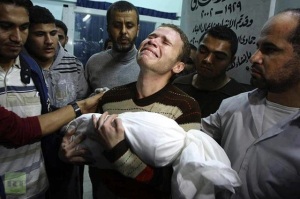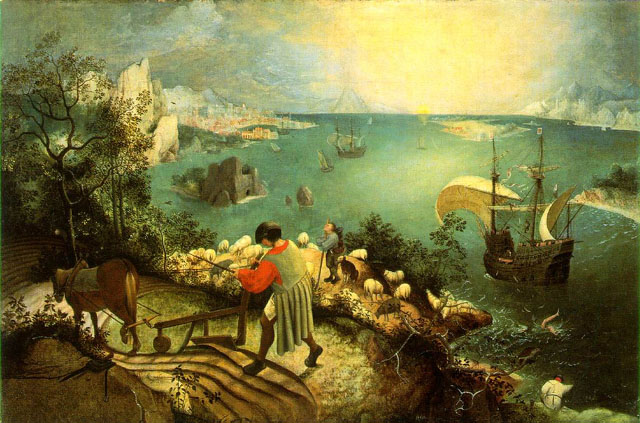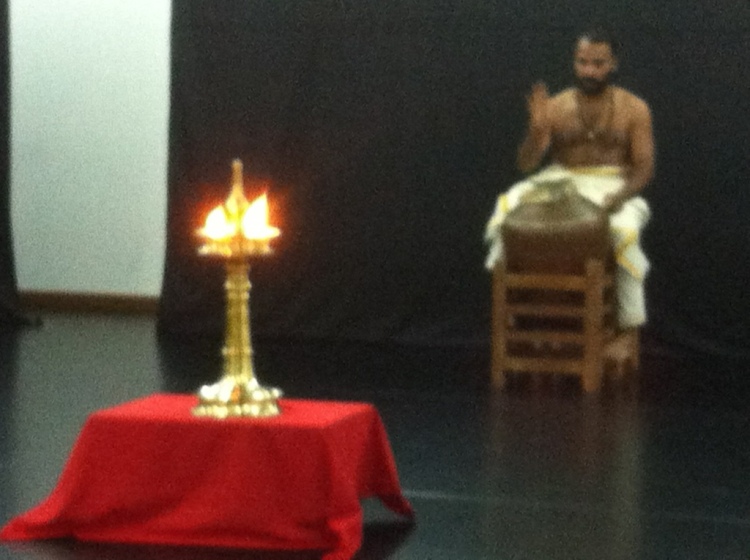I … Singaporean
For everything that lives is holy, life delights in life …
Can I see another’s woe, and not be in sorrow too?
Can I see another’s grief, and not seek for kind relief?
— William Blake
The government has been prepossessed with the notion of turning Singapore into a Global City for quite a while now. Our new “becoming”, as it were, is clearly a national development priority. So much so in fact that becoming a Global City has turned into something of a national obsession. In a city-state that is so finely structured and centrally managed, where some believe even the roadside trees are numbered and the presence of the government is both pervasive and persuasive, it is perhaps inevitable that we should be so obsessed.. You see, nothing ensures obsequiousness in a people like good old-fashioned national obsessions.
There is an inexorable logic to the selection of the model upon which Singapore’s economic growth and national development are predicated. Our economy is modeled after a particularly virulent strain of capitalism; a form of über-capitalism which is far more reliant on consumerism and an appetite for materialism — a rabid proclivity to spend — than common-or-garden variety capitalism. For it is only with the frenetic pace of über-capitalism that the government has any hope of sustaining the stratospheric rates of economic growth necessary to placate people’s material appetites and secure its own position, power and dominance in Singapore.
And so it begins; the unholy, interminable race to scramble up and higher the constantly extending, slippery value-chain of instrumentalist economics. This endless scrambling upwards, always ordered but nonetheless unseemly, has been the staff and stuff of Singaporean life, indelibly imprinted in our collective subconscious, since our bith, the birth of the Republic in 1965.
As so often happens in these circumstances, with so many government-inspired obsessions in Singapore, the prize of becoming a Global City has now become something of a national fetish.
We are all of us familiar with this transmutation wherein what ought to be a matter of our choice, an option for the people , an elective economic model , is seized upon by the state and turned into absolute imperative; reducing and ultimately condemning all life in Singapore to the treadmill of teleology.
This is the uniquely Singaporean brand of nationalism; born of a dumbstruck populace, morally de-centered and rendered emotionally off-kilter through the incessant and tempestuous batterings of an all-consuming economy primed to perform at a feverish and, ultimately, impossible pitch.
As such, Singapore is in a state of perpetual prepossession, overcome, enervated by the withering absolute that is the economy. Stupid. Our lot as Singaporeans is one of perpetual anticipation and edginess, vulnerability and dis-ease. It is a feeling familiar to us all, a consequence of being in long, endless queues, all our lives.
Singaporean lives, punctuated by acts of queuing, from pre-school classrooms and school canteens to hawker-centers, MRT Stations and 4-D counters, are measured out by bouts of delirious anticipation.
We the citizens of Singapore pledge ourselves to wait quietly in line; in interminable lines, so as to cash-in on the promissory note of a bigger, better and brighter economy.
• • •
And so it has come to pass that becoming a Global City has become our manifest destiny. It is now almost inevitable that we will become that brilliant, gleaming, pinnacle on the pile of all the world’s cities. What is more, If the rankings and the league tables and the surveys are to be believed, we are well on our way to being in the Alpha ++ league of cities.
This is, as such things tend to be here, almost, a fiat accompli. Singapore is now, after all, the location of choice for such epitomes of human civilization, culture and cultivation as the Sports Illustrated Swimsuit Edition (2011), The Martha Stewart Show and The Amazing Race. It appears, by any measure that matters to the government, we have arrived.
But what does it really mean to be a Global City? Surely it must mean more than vaulting towers and palaces, more than worldly power and influence and more than wealth and mere material gain, more, surely, than being the undisputed location of choice for the next Bollywood or Hollywood blockbuster or F1 Grand Prix?
If we, as Singaporeans, must aspire to belong to a Global City, to aspire at all; to aspire now, at this particular juncture of human history, to be a Global City must mean more than merely aspiring to be a good city? It must mean we must aspire to greatness … to be a great city.
Perhaps a Persepolis, Rome, Karakorum, London, Berlin, New York? What do all those great cities have in common? They proffered their populations, in some small shape, way or form, the possibility of a transcendence. They engendered the means for their people, their citizens, to get above and beyond the vexatious flux of both the immediate and the material.
A truly great Global City must, necessarily, be the site where the prerogatives and the encumbrances, the rights and the responsibilities, of what it is to be a citizen of that city are conceived, contested and eventually congealed. It must be the location where the identity of the citizen is formed and solidified; where the various, disparate, different and plural aspects of the personality and the self are fused and ordered, and where the fragments of the individual, private self that defy such an assay may, conclusively and finally, be subordinated to the common, public identity that is entailed by the notion of “citizenship”.
This indeed is the alchemy of national consensus, the transformation that a truly Global City, a truly great city, enables in its citizens. This is the ultimate gift of the Global City to its people.
It follows, therefore, that a true Global City must possess a highly refined and acute sense of genius loci — spirit of place. Put another way, a great city must necessarily be a site where the souls of its citizens are forged; “soul” that is qua ontology, as an existential category of the self, rather than qua theology — that is, implying or concerning the Deity.
The bond between the city and an individual who is a citizen of it is radically umbilical. Therein lies the root of the “rootedness” that moors the self to a place and why so many people yearn to belong to some particular city or other. It is precisely because the bond is so radical that there is identification with a specific place; the radicality of this identification is the basis and bedrock of the claim that some particular city is “my home”.
This bond, its radicality, and the identification that it engenders with a city or another is why, when called upon, some people, will give their lives for it. As history proven time and again, people will die to protect their homes.
The desire for this bonding is sometimes so urgent, so palpable it could be manifested as pure aspiration. Consider its invocation by United States president John F Kennedy on 26 June 1963 when, at the height of the Cold War he said in Berlin:
“Two thousand years ago the proudest boast was
Civis Romanus Sum. Today, in the world of freedom,
the proudest boast is Ich bin ein Berliner.”
The need for such bonding could be so intense, so immensely overwhelming, it might be asserted or assumed even when citizenship is explicitly denied and only subject-hood is proffered. As in the case of Nirad C. Chaudhuri’s dedication to his novel The Autobiography of an Unknown Indian (1951):
“To the memory of the British Empire in India,
Which conferred subjecthood upon us,
But withheld citizenship.
To which yet every one of us threw out the challenge:
‘Civis Britannicus Sum’
Because all that was good and living within us
Was made, shaped and quickened
By the same British rule.”
• • •
In unpacking the meaning of Singapore for Singaporeans, in terms of the notions of home, of our deep need and desire to belong to and identify with a city — this forge of our soul, this genius loci … “because all that [is] good and living within us / Was made, shaped and quickened [here]” — we discover, remarkably, a bond uniquely more binding, more compact and more intense and forceful, compared to equivalent relationships of other cities and their citizens.
The uniqueness of being Singaporean, arises not because Singapore is somehow exceptional, but because of Singapore’s preposterously small size.
You see, in Singapore’s case, in our case, our city is all that is the case. There is nothing more; no larger hinterland to speak of, no urban / rural difference, no bigger country or countryside. No ameliorations whatsoever to geography, either physical or mental, are available to us.
There is no calibrating frame reference or comforting context afforded by territoriality; no other enabling circumstances or conditions of materiality and no significant temporal distance or separation wherein our city may be conceived or imagined or enacted; swathed, contained, lighted in space and time as scene and setting. There simply is no theatre wherein to play out the performance of Singapore’s nationality.
Singapore is all there is for us; at once, city-state-nation. It is all, for Singaporeans.
This apparent wholeness is without doubt a remarkable confabulation. And there is a brute inescapability about its improbable morphology. Singapore’s existence, its very being, is about as far removed from any notion of the “natural” as it is possible to imagine; it is a purely willed whole, an artifice of determination.
This of course is completely at odds with the usual state of these things; the way states are “supposed to be”. Singapore is in fact positively “unnatural”.
More than two centuries of slow, deliberate and directed progress separated the conception of the sovereign state with permanent borders and territory ( read Treaty of Westphalia,1648), from the only idea of nationhood which is singularly relevant to us today as Singaporeans. The only idea of nationhood relevant to the Singapore of today, that aspires to be a great and truly Global City: Is the notion of nationhood as a moral and existential formation, a “spiritual principle” centered as it were in a “soul”; the idea of nation articulated by Ernest Renan (What is a Nation? 1882):
“A nation is a soul, a spiritual principle. Two things, which
in truth are but one, constitute this soul or spiritual
principle. One lies in the past, one in the present. One is
the possession in common of a rich legacy of memories;
the other is the present-day consent, the desire to live
together, the will to perpetuate the value of the heritage
that one has received in an undivided form.” …
“A nation is therefore a large-scale solidarity, constituted
by the feeling of the sacrifices that one has made in the past
and of those that one is prepared to make in the future.
It presupposes a past; it is summarized, however, in the
present by a tangible fact, namely, consent, the clearly
expressed desire to continue a common life.” …
“Man is a slave neither of his race nor his language, nor
of his religion, nor of the course of rivers nor the direction
taken by mountain chains. A large aggregate of men,
healthy in mind and warm of heart, creates the kind of
moral conscience which we call a nation. So long as this
moral consciousness gives proof of its strength by the
sacrifices which demand the abdication of the individual
to the advantage of the community, it is legitimate and has
the right to exist.” [my emphasis]
In Europe, the process of conjoining the notion of the sovereign state with that of the nation was torn to shreds and nearly destroyed beyond repair by two catastrophic world wars over the ensuing 50 years. It bears pointing out that any claim to legitimacy Singapore might have as a sovereign state is less than 50 years old and any notions Singaporeans may harbour of being a nation is at least as long a time away — in a mist-filled, optimistic future. The process of Singapore’s “ensouling”, of forming a soul, however, has already begun in earnest; of that, there is absolutely no doubt.
We are neither a large aggregate nor a large-solidarity. We have no rich common heritage; any richness of heritage we might possess is born of deep differences and diversity and plurality, the very antitheses of a commonality.
But we do possess a legacy of memories of a past compactly lived; feelings of pride and strength born of the ordinary, everyday sufferings and sacrifices that Singaporeans of every ilk, creed, colour and class made, and continue to make, in the continuous struggle to just get by. To be; Singaporean.
This struggle to be; the simple, unadorned act of just getting by, played out all around us a million times a day by countless, faceless folk over the last 50 years is the signification of our consent for a continued common life. Our lives are the vessels of our “expressed desire” and our sacrifice of the personal and the individual for the good of the whole and the weal of the commons.
It is precisely in the everyday struggle of the people to be, the quotidian “health of mind” and “warmth of heart”, the ceaseless faith and industry of the ordinary Singaporean, that our collective moral conscience lives. This is the aforesaid “ensouling”; the incipient quickening of the moral and spiritual principle mingled with a lived experience, which will, in the fullness of time, become our soul. This all it is: An existential essence, life; our lives, lived at once individually and collectively.
This is the very thing-process that the Irishman James Joyce so beautifully celebrated in his novel A Portrait of the Artist as a Young Man and encapsulated in:
“Welcome, O life!
I go to encounter for the millionth time the reality of
experience and to forge in the smithy of my soul the
uncreated conscience of my race.”
Singaporean lives, our encounter with the reality of experience, could bear a far better telling than they have been accorded thus far.
The people of Singapore deserve an honest telling, one that is as far removed from being propaganda or advertising as is humanly and creatively possible. Singaporeans deserve a beautiful telling guided by our incipient moral sensibility and by the reality of life about us rather than what we have — ugly, unwieldy narratives tainted by the provisional pettiness and partisanship of party political processes skewed by the overweening presence of a single, puffed-up, tiresomely dominant political party.
Singaporeans deserve better. This is a truth both our government and our citizens (the artists, in particular) should heed in equal measure.
• • •
On the 25th September 2009, the last day of the International Federation of Arts Councils and Culture Agencies’ (IFACCA) 4th World Summit on Arts and Culture in Johannesburg, South Africa, I had the singular pleasure of meeting Justice Albie Sachs, a judge of the Constitutional Court of South Africa. He was appointed to the court by none other than Nelson Mandela himself.
Justice Sachs, who opposed apartheid, had lost his right arm and an eye to a bomb placed in his car in 1988 by South African state security agents. He is, clearly, a man who knows a thing or two about what it means to the struggle for freedom and justice, about fighting for the right and the oppressed, about dying for one’s home; about the soul of men and of nations.
“Hello”, I said extending my left-hand, “I’m from Singapore.” He took my hand, smiled, fixed me by his one good eye and said, “Ah … you have everything except a soul.”
He might as well have slapped me in the face or kicked me in the gut. I was winded; but managed a grimaced smile before the hurt finally flooded through me. Why was I hurt? Because this man, this exceptional judge, was spot-on in his assessment of us, as Singaporeans. By almost every possible estimation we do have everything, and yet by some honest estimations we are soulless.
I wish I had told him then that some Singaporeans knew their country lacked a soul. But that they also knew full well that the souls of nations are made by great labour and by great faith and great sacrifice. And that we, as a people, in the millions of the moments of our shared lives and in a myriad of uncountable ways, have already started on the long trek towards building a soul for our beloved country.
One day, we too as a people, will gain the voice to speak to truth to power, stand up in the defense of the freedoms of all our fellow men and women, bear witness and breakdown the illegitimate controls of the state on the people’s legitimate rights of protest and dissent and assembly, defend free speech and expression and speak on behalf of the powerless, the poor, the oppressed and the weak.
On that day we will all, as a people, be able to openly acknowledge that some who had walked ahead of us, like Joshua Benjamin Jeyaretnam, Kuo Pao Kun, Chia Thye Poh, Lim Hock Siew, Vincent Cheng, Teo Soh Lung and many others, who had the courage of their convictions and suffered bitterly for holding such convictions and having such courage, served too, and sacrificed more than most in the shaping of Singapore’s soul.
We may not all of us live to see that day. But I am certain our children will, and that will do just fine.


